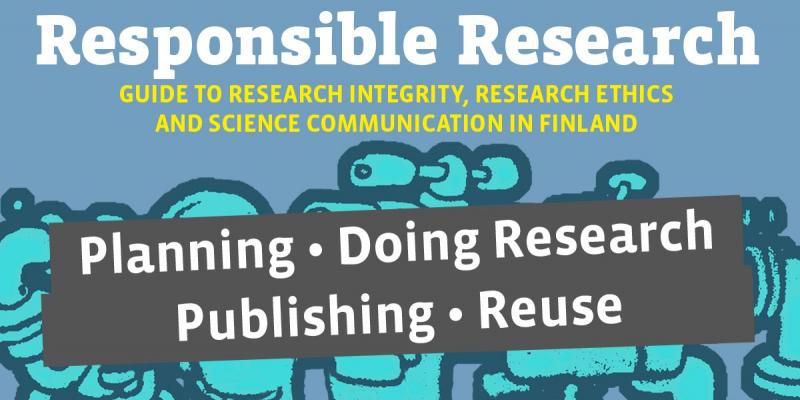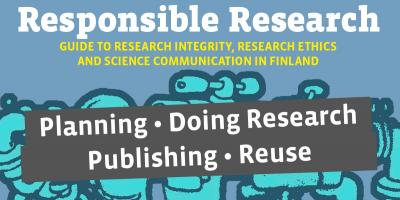What can you tell about the initial results of research? Or about research that is partly only at the planning stage?
My Monday afternoon was interrupted by a perplexing phone call.
“Hi, I’m a journalist from Gizmodo, is that the Tuomas Aivelo who researches rats?”
In a way, it was, as I had been sitting at my desk at the University of Helsinki’s Viikki Campus for almost a month by that point. I hadn’t seen a single rat yet, but I was drawing up plans for where and when I would get to see some.
“Have you seen the viral video of the showering rat? I’m looking for some comments on it from a rodent researcher.”
I hadn’t, but two minutes later I was watching a video of a rodent scrubbing itself with soap, except it wasn’t actually a rat but a pacarana, a large South American rodent. Three and a half minutes later I had formed the opinion for the journalist that wild rodents did not need to use soap and that it might even be harmful to animals in the wild.
Science communication is too much like sports reporting
I have often criticised science news for sounding too much like telegraphic sports updates: researchers from the University of Helsinki research a phenomenon and produce a soundbite. Yesterday Jokerit beat HIFK 3–1.
If communicating research results isn’t easy for researchers, at least it is straightforward: we did this, we got these kinds of results, they have now been published and approved by peer review.
In ice hockey, the most important thing isn’t the number of goals, however. Goals are counted when you are deciding which team is the best, and for individual players, it is important how many goals you score in the season. But people watch ice hockey because the game itself is interesting to watch.
I don’t do science for the goal compilation either. I do science because the whole process is interesting and exciting.
In research, goals aren’t scored very often. It usually takes years from starting to conduct research before the results are published. Sometimes it takes years between obtaining the results and being able to show them to the public (although preprint publication has speeded up this time lag).
Communication during research is more challenging than straightforwardly explaining the events of an ice hockey match: the commentator can just constantly say what is happening on the rink. The researcher, however, is working more in the dark. What can I say about the initial results? What can I say about my intuition on the basis of the research? How do I answer when a journalist asks when these results will appear? What can you say about research that is partly only at the planning stage? Do I know enough about the topic of my research to be able to comment on other news?
In science, the honour of discovery is gained by the person who publishes their results first. This, combined with fierce competition between researchers, leads to researchers being afraid of someone stealing their research. What then can you risk saying about your research in public?
The life of a researcher is interesting
I have refined my tactics of how to communicate my research when there are no actual results. This has been essential really because my research results themselves haven’t been particularly exciting. I have never written a press release about my research being published. My research results simply can’t easily be bent into the shape required for a press release. How intestinal parasites in mouse lemurs change over the years and how parasites and intestinal bacteria affect each other is not a punchy research result and nor can it easily be turned into a press soundbite. My results are more part of a long series of research in which I am aiming to do something in a new way, where subsequent researchers will be able to continue from where I left off.
The anticlimactic nature of my individual research results is a kind of blessing. Science is not a pile of research results that together form a coherent whole. Science is doing; it is a system in which a community of researchers experiments, makes mistakes, tries a new approach and finally achieves some kind of publication that other researchers then criticise, improve, forget or use as a basis for their own work. Much more often the power of a scientific publication lies in the method that was used rather than the results themselves.
Communicating the scientific process is an excellent idea; everyday success, stumbles and progress are interesting.
This means that communicating the scientific process is an excellent idea; everyday success, stumbles and progress are interesting. In addition, the general public does not know how science is done, so it is a good idea to explain what we do all day. Making doing science visible – by writing about our normal lives – makes it easier for the public to understand what science is and how knowledge is created.
Animals are excellent examples
I have always found that communicating science is relatively easy for ecologists. I research living animals who do interesting things. Ticks and rats are familiar species. Thanks to Mort in the Madagascar films, so are mouse lemurs.
Things happen out in the field. Mouse lemurs mess around because they clearly aren’t among the brightest of animals. Rats are usually efficient and determined. It’s easy to write about the things they do.
For example: mouse lemurs are a female-dominant species. This means that in their internal hierarchy, females come before males. This relatively tricky concept becomes clearer when I can tell this story:
“One night I was releasing a female mouse lemur we had caught into a bamboo thicket. Lalao came out of the trap and jumped onto a branch. At the same time, I noticed a male further away – it was easy to tell he was a male because of his big scrotum. The male had clearly sensed that Lalao was ready to mate. He jumped from branch to branch, nearer and nearer, until he finally jumped onto the same branch as Lalao. Lalao didn’t hesitate for a second, she hit him on the head with a right hook. The male was frightened off, jumped one branch away and Lalao slipped off into the rain forest night without her admirer.”
And there it is, female dominance explained in a minute.
Communication from animal researchers is made easier by the fact that animals do not enjoy the same protection of privacy as human subjects do. I can talk about the behaviour of Lalao the mouse lemur because no-one reading my blog is ever going to bump into her.
There is a sensitive aspect to animal research too, though. For example when doing research on rats, I never say where the research took place. I find the rats outside blocks of flats and in other public areas, and the local residents don’t necessarily appreciate me pointing this out. We have decided that we will not tell the city authorities, for example, the places where we have found rats.
The ethical questions of communication need to be considered before starting to communicate about a new project. What are the sensitive points? What things can I not talk about? What is confidential information? What effect will my own communication have on my research subjects?
The researcher is an expert
Most of the researcher’s communication is not, however, directly related to his or her own research but more to his or her expertise. I am the only full-time Finnish researcher working on wild rats, so journalists tend to phone me whenever a rat has done something in some Finnish town.
The professional skill of the expert also includes being able to communicate uncertainty and the limits of our knowledge in the right way.
Journalists ask good, key questions: How many rats are there? Is the number of rats increasing? What factors affect the number of rats? We do not know the answers to these questions because our research has not got anywhere near that point yet. I can answer some questions based on my expertise. In some cases, I can speculate. Sometimes I say that the situation looks like this but more research is needed. The professional skill of the expert also includes being able to communicate uncertainty and the limits of our knowledge in the right way.
Have I ever seen a pacarana? No. Could I comment on a viral video based on my professional skill as a mammal researcher? I could. How do I know whether I have sufficient expertise to comment on this issue? Unfortunately, there isn’t a rule of thumb for that: it is part of my expertise to know what my expertise covers.
Tuomas Aivelo works as a postdoctoral researcher at the University of Helsinki where he runs the Helsinki Urban Rat Project and writes the blog Kaiken takana on loinen (Behind everything there’s a parasite) on the Tiede magazine website.
You might also be interested in
Tämä teos on lisensoitu Creative Commons Nimeä 4.0 Kansainvälinen -lisenssillä. Detta verk är licensierat under en Creative Commons Erkännande 4.0 Licens. This work is licensed under a Creative Commons Attribution 4.0 International license.

